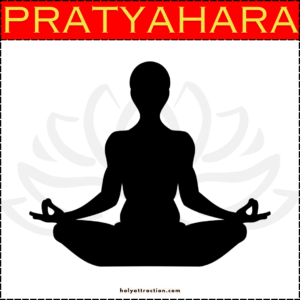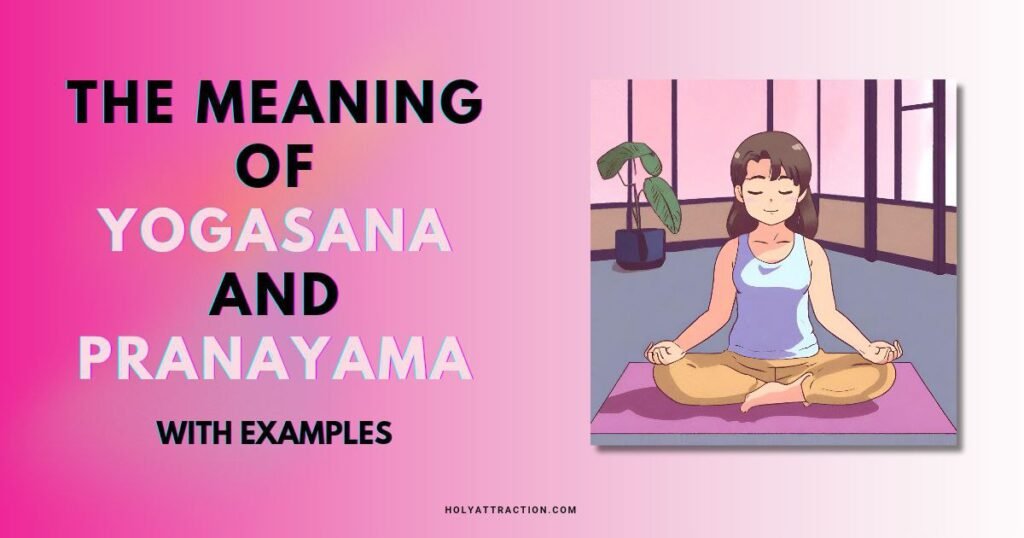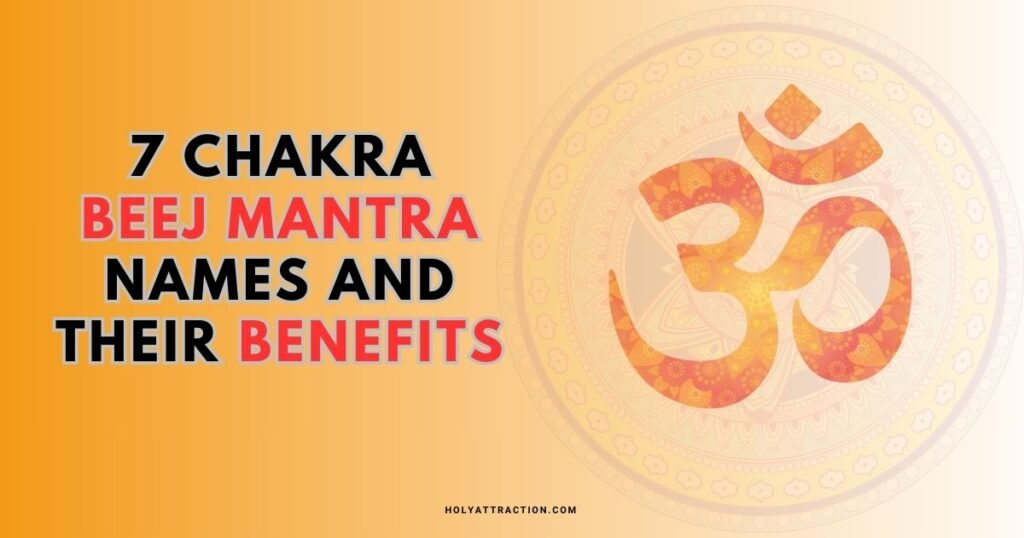
Today in this post we are going to know about Pratyahara the fifth limb of patanjali’s Yoga Sutra. There are a total of 8 yoga called ‘Ashtanga’. We have already discussed some of them. Pratyahara is a very underrated among these eight Yoga but it is very important and powerful yoga and anyone can’t ignore it. So today in this post we will discuss what is the meaning of Pratyahara and what are the 4 types of Pratyahara. We will also know about a mudra which can help a lot to practice Pratyahara. Let’s start the day with yoga.
What is the meaning of pratyahara?
According to patanjali, Pratyahara is the fifth limb of yoga as he mentioned in his yoga sutra. The word Pratyahara is a Sanskrit word which is made with two words ‘Prati’ and ‘Ahara’. The word prati means ‘Against’ or ‘Away’ and the word Ahara means ‘food’ or ‘Taking Something Inside’. So Pratyahara meaning comes as ‘Getting Control over anything we take in like any view, any sound, any smell etc’ or ‘withdrawal of the senses‘. Means it acts like a bridge between external practices (like Asana and Pranayama) and internal practices (like Concentration and Meditation). It helps to get control over all senses and makes the practitioner more self-aware. Next we will know the main types of Pratyahara.
What are the 4 types of pratyahara?
The Pratyahara which focuses on the withdrawal of the senses from external things to internal peace. It has different types based on sensory withdrawal and mental withdrawal.
Here are four main forms of pratyahara:
1. indriya-pratyahara (control of the senses)
The word ‘indriya’ means ‘five senses’ and the word Pratyahara means withdrawal. Thus, it refers to the withdrawal of all five senses from the external objects to the internal mind. Sometimes getting information from the external world can lead to destruction. For that, getting control over senses can help to make the mind more focused, clear and emotionally balanced. Here are all five senses:
- Sight
- Hearing
- Smell
- Taste
- Touch
Getting control over these five senses is Indriya Pratyahara.
2. karma-pratyahara (control of action)
Karma means actions and Pratyahara means withdrawal. Getting control over unnecessary actions is karma pratyahara. It refers to a very disciplinary life. It helps to get self control and control over physical actions. To achieve that one can do seva means selfless services. One can help others to bring discipline and focus into life.
3. prana-pratyahara (control of prana)
Prana means breath and Pratyahara means withdrawal. Getting control over breathing is Prana Pratyahara. To do so one can do pranayama. After focusing on life driven energy (prana), practitioner can achieve a great control on senses and mind.
4. mano-pratyahara (withdrawal of mind)
Mono means mind and Pratyahara means withdrawal. Getting control over the mind’s thoughts is Mano Pratyahara. There are lots of distracting thoughts and feelings that can make the mind uncertain and sad. Withdrawal of the mind from these thoughts and feelings give the practitioner a feeling of peace and joy. It calms the mind. To achieve this anyone can do meditation and concentration practices (To know more about meditation you can see our other posts).
These were the all four types of Pratyahara. Further we will discuss how to practice Pratyahara.
How to practice Pratyahara?
Here are some techniques for practicing Pratyahara:

- Meditation: Focus on your breathing so that you can give attention inward
- Visualization: Imagine the peaceful moments and experiences so that your mind can get calm.
- Focus on a Point: By focusing on a point you can bring your all attention to a particular thing so that your mind can get peace and can stick to a thing.
- Body Scanning: You can focus on your body from head to toes or vice versa. It will improve your thinking and bring all your focus to the different parts of your body.
- Mudras: Mudras are some hand gestures which are used in yoga. Here are some Mudras which can be used to practice Pratyahara. Yoni mudra also known as womb gesture is one of the most famous mudra for practicing Pratyahara. Others are Shanmukhi mudra(Six gates Gesture), Prana mudra(Life Force Gesture), Gyan mudra(Knowledge Gesture) etc.
There are more ways to practice Pratyahara. It is not limited to it. For example, in your daily life you can avoid eating junk food that you like a lot. It will impact the Indriya Pratyahara. Another example is to help others without thinking about self benefit. It will impact the Karma Pratyahara. There can be many more practices that you can follow to get control over your senses, mind, karma and prana.
Benefits of practicing pratyahara
Here are some benefits of practicing pratyahara:
- Sensory Control: When you practice Pratyahara you get the control over your 5 senses.
- Emotional Balance: It helps to get more inward and less outward that’s why you get less impacted by the outer world.
- Inner Peace: When you follow Pratyahara you get more inward and get self aware. It leads to inner peace.
- Clearity: When you get detached to the external world your mind gets more clear in life.
These were the few benefits of practicing pratyahara. There are lots of other benefits too to practice Pratyahara. So if you are thinking of practicing it then you should go for it because it will benefit you enough in your life.
Conclusion
In this post we have discussed all about Pratyahara that is the fifth limb of yoga according to patanjali in his yoga sutra. It is very important yoga but still it is much underrated compared to other yogas. Hope you will spread awareness about this yoga. If you want to practice Pratyahara then we have shared some methods which you can practice even at your home. Today we have learnt what is the meaning of Pratyahara, What are the 4 types of pratyahara, how to practice it and what are the benefits of it. Hope you like this post. Also share this post with your family and friends so that they can also get aware about this yoga. Thank you so much for reading this article till the end.




